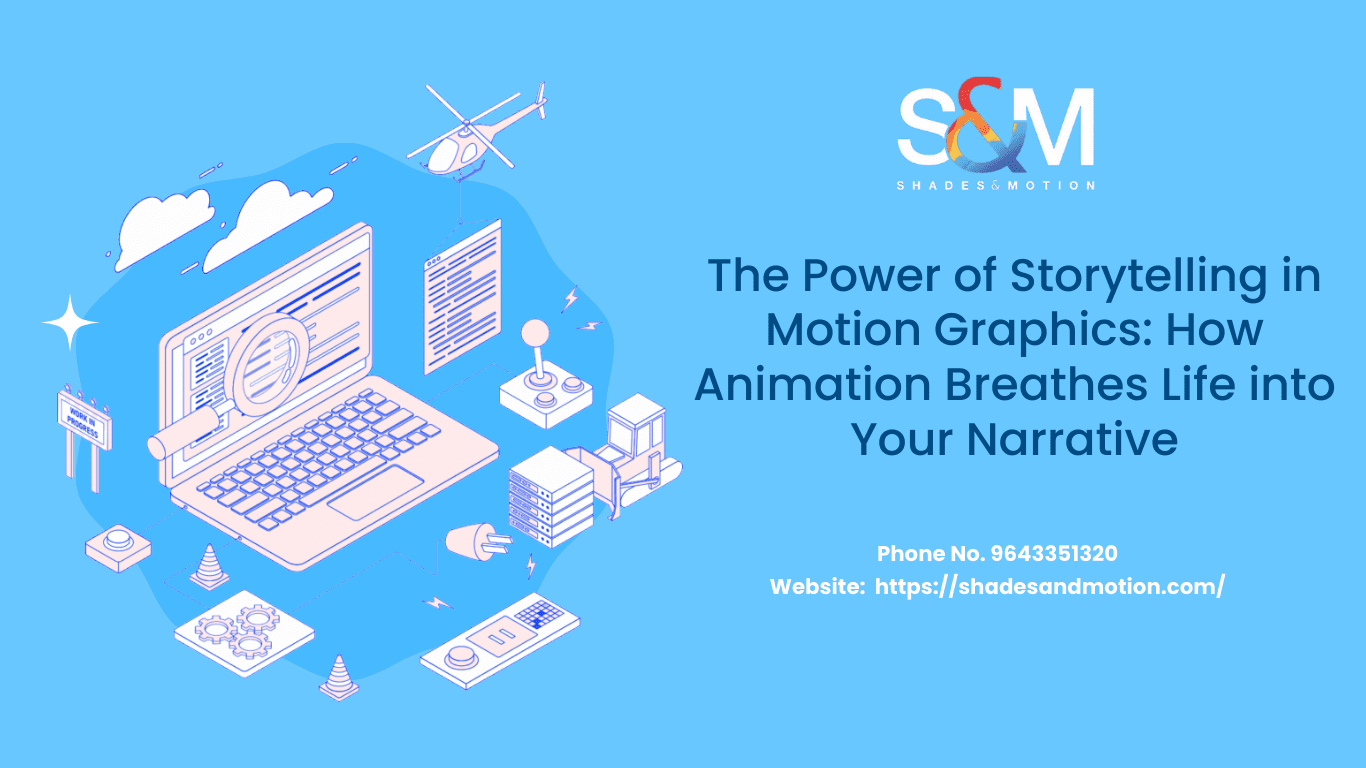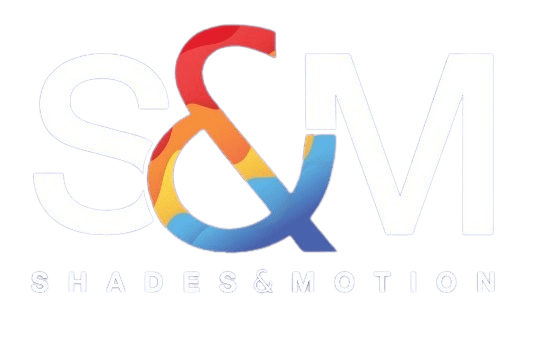

The Power of Storytelling in Motion Graphics: How Animation Breathes Life into Your Narrative
In today’s fast-paced world, capturing attention and communicating ideas effectively is more crucial than before. Here’s where motion graphics step in as a superhero of visual storytelling. By seamlessly blending animation, visuals, and sound, motion graphics take your narrative to new heights, making it engaging, memorable, and impactful. We at Shades ad Motion make sure that we stay up to date with the power of motion graphics in the high-demand industry. We integrate motion graphics into your story to make it more alive. Have a look below to understand why storytelling is important in motion graphics.
Why Storytelling Matters in Motion Graphics?
Humans are hardwired for stories. They resonate with us on an emotional level, allowing us to connect with the message on a deeper plane. Static images, while powerful, can sometimes lack the dynamism needed to truly capture the audience’s imagination. Motion graphics bridge this gap.
Motion graphics, also sometimes called motion design, is essentially animated graphic design. It breathes life into static visuals by adding the elements of motion and time. Here’s a breakdown of what motion graphics are and what they do:
The Core Idea: Adding Motion to Graphic Design
Imagine text, shapes, illustrations, and other visual components coming alive with animation. That’s the essence of motion graphics. It uses various animation techniques to create visually engaging content that can inform, entertain, or persuade viewers.
Applications of Motion Graphics
Motion graphics are used extensively across a wide range of media, including:
- Explainer videos: These short animated videos use motion graphics to explain products, services, or complex ideas in a clear and understandable way.
- Marketing and advertising: Eye-catching motion graphics can grab attention and effectively communicate brand messages in commercials, social media posts, and other marketing materials.
- Film and television: From title sequences and intros to motion overlays and special effects, motion graphics play a big role in filmmaking and television production.
- Presentations and educational content: Presentations become more dynamic and engaging with the use of motion graphics, and educational content can be made more interactive and easier to understand.
The Difference from Traditional Animation
While motion graphics involve animation, there’s a key distinction. Traditional animation often focuses on creating characters and narratives, whereas motion graphics typically prioritize clear communication and visual impact. They often use text, shapes, and data visualizations alongside animation to deliver a message.
Overall, motion graphics are a powerful tool for visual storytelling. By combining animation, design principles, and sometimes sound design, they can effectively engage viewers, explain complex concepts, and leave a lasting impression.
Animation: The Secret Weapon of Storytelling
Animation in motion graphics acts as a powerful tool to enhance narrative communication in several ways:
- Bringing Characters and Concepts to Life: Imagine complex scientific processes or historical events explained through engaging animations. It makes the abstract concrete and the unfamiliar relatable.
- Creating Emotional Journeys: Through movement, timing, and visual metaphors, animation can evoke a range of emotions, keeping viewers invested in the story.
- Breaking Down Complex Information: Animations can simplify intricate concepts by visually guiding viewers through step-by-step processes or data visualizations.
- Adding Humor and Personality: A touch of well-placed animation can inject humor or personality into your narrative, making it more engaging and memorable.
Examples of Storytelling in Motion Graphics
Motion graphics are used extensively across various fields to tell compelling stories. Here are just a few examples:
- Explainer Videos: These short animated videos utilize motion graphics to explain products, services, or complex ideas in a clear and concise way.
- Educational Content: Educational institutions and online learning platforms leverage motion graphics to create engaging and interactive learning experiences.
- Social Media Marketing: Eye-catching and informative motion graphics are a powerful tool to grab attention and spread brand messages on social media platforms.
- Movie Titles and Intros: The captivating motion graphics in movie titles and intros set the tone for the film and create a lasting impression.
How do we do it?
The creation of a motion graphics video can be broken down into several key phases:
Pre-Production
- Concept & Brief: This initial stage involves defining the project’s goals, target audience, and the message you want to convey.
- Brainstorming & Moodboarding: Here, creative ideas are explored visually using tools like mood boards to establish the desired style and tone of the video.
- Storyboarding: A storyboard visually maps out the sequence of shots and helps plan the animation and flow of the video.
Production
- Design & Illustration: This stage brings the storyboard to life by creating the visual elements like characters, backgrounds, and graphics.
- Animation: The designed elements are brought to life using motion graphics software to create the animation sequences.
Post-Production
- Sound Design & Music: Audio elements like sound effects, voiceover narration, and background music are added to enhance the video’s impact.
- Editing & Refinement: The video is assembled, polished, and refined to ensure a smooth flow and effective delivery of the message.
- Delivery & Export: The final video is exported in the desired format for its intended use, such as online sharing or presentations.
The Takeaway- From the experts at Shades and Motion.
By harnessing the power of storytelling through motion graphics, you can transform your narrative from informative to captivating. It allows you to connect with your audience on an emotional level, simplify complex ideas, and leave a lasting impression. So, the next time you have a story to tell, consider using the magic of animation to bring it to life.


Leave a Reply